Sheffield - West Riding
‘The large hall, 180 feet long and 90 feet wide, will hold 12,000 persons, and seat 2,500. Adjoining the hall is a gun-shed, harness rooms and stables, and at the far end a riding school 75 by 60 feet.’
It lists the occupants as, ‘THIRD WEST RIDING BRIGADE ROYAL FIELD ARTILLERY (3 Batteries [7, 8, 9] armed with 15 pounders B.L.C. and Ammunition Column), Head Quarters, Artillery Drill Hall, Clough Road.
Further description in Kelly, 1881, reveals that ‘the Volunteer Artillery Drill Hall, Edmund road, was built for the use of the 4th West York Artillery Volunteers, and is the property of a joint-stock company.’
The building is confusingly known both as the Volunteer Artillery Drill Hall and Norfolk Barracks, and the address given as either Clough road or Edmund road.
The main frontage of the building is on Clough road.
Also: ‘The roof is constructed in one span, without pillars. There is a lofty drill room, 108 feet long and 90 feet wide, and a gun-shed the same length, but narrower. In addition to serving the purpose for which it was built, it is let for public meetings, concerts and balls, for which it is well adapted. Messrs. M. E. Hadfield and Son were the architects; Mr. Joseph Hardy, 9 Norfolk row, is secretary to the company.’
Hadfield’s plans were apparently the smaller of two buildings proposed.
According to the Public Art Research Archive, Sheffield Hallam University:
“The building was raised as a drill hall for the 4th West York Artillery Volunteers. Hadfield put forward two designs for the Drill Hall, that built being the smaller and less ambitious of the two. The foundation stone was laid on 25th September 1878 by Flora Fitzalan-Howard, 15th Duchess of Norfolk. The building completed, after some delays, in 1880, being formally opened on 2nd June 1880 with a grand dinner and ball.
”The cost, originally estimated at £9,000, was eventually £13,000. The money was raised from sales of shares in a joint stock company formed from the Officers of the Artillery Volunteers. Henry Fitzalan-Howard, 15th Duke of Norfolk*, purchased 30 shares.
”Following the national re-organistion of volunteer corps in 1908 the building became Crown property in 1910 and after some refurbishment was reopened on 24th May 1912 by General Sir John French.
“In the two World Wars the building was used as a base for a Royal Artillery units and also by the Home Guard. In peace time it was the HQ for Sheffield's Artillery Volunteers until 1967, after which the building was empty for more than ten years.
*Note: “The Howard family coat of arms is featured above the archway of the tower at the front of the building. It bears the Howard family motto: "SOLA VIRTUS INVICTA." Reproduced from Public Art Research Archive with permission. Thank you.
The building used to be occupied by Clark & Partners, mobility specialists. The property was bought by them in 1979 but sold at auction on 12th April, 2005, for £1,100,000.
It is an absolutely immense structure, made more impressive by the knowledge that there is first floor riding school inside! This was developed around 1890, with a timber ramp for access.
It was used by artillery units until 1967, after which it lay empty for a decade before finding commercial occupants.
Situated on the corner of Gell street and Glossop road, this impressive building was home to several units. Providing a range of offices and a large drill hall adjacent to Upper Hanover street, the building is entered by an imposing gated archway, which is surmounted by a window with the legend ‘1st W.Y.R.E. (Vols)’ above. The Royal coat of arms bisects the windows above; the façade is topped with a datestone inscribed 1907.
Kelly, 1881, tells us that ‘a Company of Engineer Volunteers has also been formed in connection with the School of Art, whose head quarters are at 106 John street, Bramall lane.’
HQ, 1,2,3,4 Sections West Riding Signal Company Royal Engineers
HQ, A, B, C Section 3rd West Riding Field Ambulance Royal Army Medical Corps
According to the MoD website, 3rd Northern General Hospital was also listed at 2 Gell Street. During the Great War, it became a Base Hospital. The hospital was first formed at Brook House, Gell Street, but later took over the Sheffield Teachers' Training College in Ecclesall Road.
Other locations:
Yorkshire Mounted Brigade (A Squadron) Queen’s Own Yorkshire Dragoons
Head Quarters – 93, Brunswick Street. Regimental 2nd in Command – Major W. Mackenzie
Eyre street with Matilda street drill ground
The Hallamshire Rifle Volunteers had (according to Kelly, 1881), ‘seven companies of 646 men, being stronger than at any time since the corps were formed…. The headquarters are in Eyre Street, the drill ground being in Matilda street.’ Drills were also carried out at the Collegiate School and Bramall Lane cricket ground.
In 1908 the Hallamshires were redesignated 4th (Hallamshire) Battalion, the York and Lancaster Regiment TF. The battalion moved to its new Headquarters at Endcliffe Hall in November 1919.
(Information sourced from:
http://www.yorkshirevolunteers.org.uk/hallamshire.htm)
‘The 4th Battalion York and Lancaster Regiment is a battalion of eight companies, raised in 1859. Head Quarters Hyde Park, St. John’s Road.’ (Kelly)
Norfolk Barracks, Clough road, also known as
Volunteer Artillery Drill Hall, Edmund road
Somme Barracks, Glossop road / Gell street
Brunswick street
Eyre street with Matilda street drill ground
Hyde Park Barracks, Hyde Park, St John’s road
For clarity, we have listed unit references within each individual entry.
Somme Barracks, Glossop road / Gell street
Brunswick street
Eyre street with Matilda street drill ground
Hyde Park Barracks, Hyde Park, St John’s road
For clarity, we have listed unit references within each individual entry.
Norfolk Barracks, Clough road:
White’s Directory of Sheffield and Rotherham, 1911, states that, ‘THE TERRITORIAL FORCE ARTILLERY DRILL HALL in Clough Road, is the property of the West Riding of Yorks County Association. The foundation stone was laid by the late Duchess of Norfolk, Sept. 25, 1878, and the hall was opened on June 2, 1880, having been erected at a cost of £13,000, towards which the Duke of Norfolk gave £5,000.‘The large hall, 180 feet long and 90 feet wide, will hold 12,000 persons, and seat 2,500. Adjoining the hall is a gun-shed, harness rooms and stables, and at the far end a riding school 75 by 60 feet.’
It lists the occupants as, ‘THIRD WEST RIDING BRIGADE ROYAL FIELD ARTILLERY (3 Batteries [7, 8, 9] armed with 15 pounders B.L.C. and Ammunition Column), Head Quarters, Artillery Drill Hall, Clough Road.
Further description in Kelly, 1881, reveals that ‘the Volunteer Artillery Drill Hall, Edmund road, was built for the use of the 4th West York Artillery Volunteers, and is the property of a joint-stock company.’
The building is confusingly known both as the Volunteer Artillery Drill Hall and Norfolk Barracks, and the address given as either Clough road or Edmund road.
The main frontage of the building is on Clough road.
Also: ‘The roof is constructed in one span, without pillars. There is a lofty drill room, 108 feet long and 90 feet wide, and a gun-shed the same length, but narrower. In addition to serving the purpose for which it was built, it is let for public meetings, concerts and balls, for which it is well adapted. Messrs. M. E. Hadfield and Son were the architects; Mr. Joseph Hardy, 9 Norfolk row, is secretary to the company.’
Hadfield’s plans were apparently the smaller of two buildings proposed.
According to the Public Art Research Archive, Sheffield Hallam University:
“The building was raised as a drill hall for the 4th West York Artillery Volunteers. Hadfield put forward two designs for the Drill Hall, that built being the smaller and less ambitious of the two. The foundation stone was laid on 25th September 1878 by Flora Fitzalan-Howard, 15th Duchess of Norfolk. The building completed, after some delays, in 1880, being formally opened on 2nd June 1880 with a grand dinner and ball.
”The cost, originally estimated at £9,000, was eventually £13,000. The money was raised from sales of shares in a joint stock company formed from the Officers of the Artillery Volunteers. Henry Fitzalan-Howard, 15th Duke of Norfolk*, purchased 30 shares.
”Following the national re-organistion of volunteer corps in 1908 the building became Crown property in 1910 and after some refurbishment was reopened on 24th May 1912 by General Sir John French.
“In the two World Wars the building was used as a base for a Royal Artillery units and also by the Home Guard. In peace time it was the HQ for Sheffield's Artillery Volunteers until 1967, after which the building was empty for more than ten years.
"For much of the Drill Hall's active military life it was also available for a hire as a venue being one of the largest spaces in Sheffield at that time. It housed flower shows, Trades Exhibitions, Ideal Home Exhibitions, and weekend dances and recitals. There were a number of political meetings held in the building; the Prime Minister spoke there in 1903 and another meeting was wrecked by suffragettes in 1906. Sporting events were held there: roller skating, boxing matches, and walking marathons from 1882. Charles Blondin the tightrope walker appeared there in 1885.”
*Note: “The Howard family coat of arms is featured above the archway of the tower at the front of the building. It bears the Howard family motto: "SOLA VIRTUS INVICTA." Reproduced from Public Art Research Archive with permission. Thank you.
The building used to be occupied by Clark & Partners, mobility specialists. The property was bought by them in 1979 but sold at auction on 12th April, 2005, for £1,100,000.
It is an absolutely immense structure, made more impressive by the knowledge that there is first floor riding school inside! This was developed around 1890, with a timber ramp for access.
It was used by artillery units until 1967, after which it lay empty for a decade before finding commercial occupants.
Somme Barracks, Glossop road / Gell street
White also gives, ‘WEST RIDING DIVISIONAL ENGINEERS. Head Quarters, Glossop Road’ along with ‘1ST and 2ND WEST RIDING FIELD COMPANIES ROYAL ENGINEERS’, and the ‘WEST RIDING DIVISIONAL TELEGRAPH COMPANY.’Situated on the corner of Gell street and Glossop road, this impressive building was home to several units. Providing a range of offices and a large drill hall adjacent to Upper Hanover street, the building is entered by an imposing gated archway, which is surmounted by a window with the legend ‘1st W.Y.R.E. (Vols)’ above. The Royal coat of arms bisects the windows above; the façade is topped with a datestone inscribed 1907.
Kelly, 1881, tells us that ‘a Company of Engineer Volunteers has also been formed in connection with the School of Art, whose head quarters are at 106 John street, Bramall lane.’
HQ, 1,2,3,4 Sections West Riding Signal Company Royal Engineers
HQ, A, B, C Section 3rd West Riding Field Ambulance Royal Army Medical Corps
According to the MoD website, 3rd Northern General Hospital was also listed at 2 Gell Street. During the Great War, it became a Base Hospital. The hospital was first formed at Brook House, Gell Street, but later took over the Sheffield Teachers' Training College in Ecclesall Road.
Other locations:
Brunswick street
‘A' Squadron Yorkshire Dragoons YeomanryYorkshire Mounted Brigade (A Squadron) Queen’s Own Yorkshire Dragoons
Head Quarters – 93, Brunswick Street. Regimental 2nd in Command – Major W. Mackenzie
Eyre street with Matilda street drill ground
The Hallamshire Rifle Volunteers had (according to Kelly, 1881), ‘seven companies of 646 men, being stronger than at any time since the corps were formed…. The headquarters are in Eyre Street, the drill ground being in Matilda street.’ Drills were also carried out at the Collegiate School and Bramall Lane cricket ground.
Hyde Park Barracks – Hyde Park, St John’s road
The 1st (Hallamshire) Volunteer Battalion, The York and Lancaster Regiment moved to Hyde Park barracks (listed in White as Hyde Park, St. John’s Road) in 1883, where they remained until 1914.In 1908 the Hallamshires were redesignated 4th (Hallamshire) Battalion, the York and Lancaster Regiment TF. The battalion moved to its new Headquarters at Endcliffe Hall in November 1919.
(Information sourced from:
http://www.yorkshirevolunteers.org.uk/hallamshire.htm)
‘The 4th Battalion York and Lancaster Regiment is a battalion of eight companies, raised in 1859. Head Quarters Hyde Park, St. John’s Road.’ (Kelly)

Norfolk Barracks
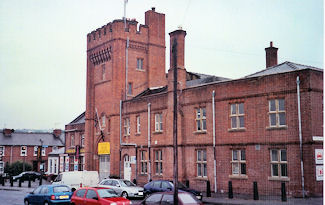
Norfolk Barracks

Norfolk Barracks
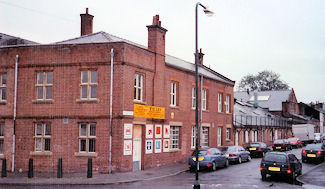
Norfolk Barracks

Norfolk Barracks - Riding School

Norfolk Barracks - Riding School

Norfolk Barracks - 7

Somme Barracks
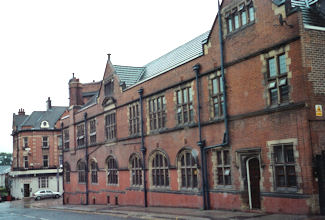
Somme Barracks

Somme Barracks
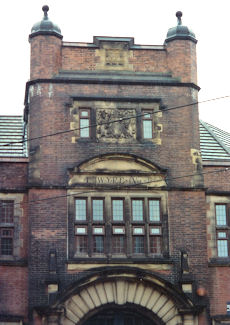
Somme Barracks

Somme Barracks
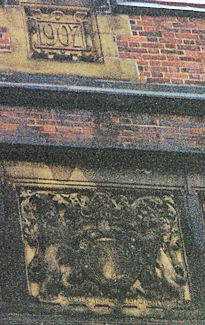
Somme Barracks
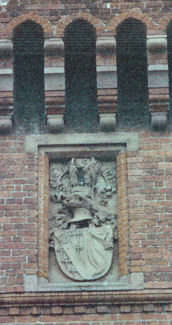
Somme Barracks
© All material is copyright - refer to the
Terms of Use
the first attempt at content
Introduction
About
Anatomy
Drill
 Database
Database
 Memorabilia
Memorabilia
Resources Glossary
Saving Halls Participate Contact What's New? Terms of Use
Drill
 Database
Database Memorabilia
MemorabiliaResources Glossary
Saving Halls Participate Contact What's New? Terms of Use
The Drill Hall Project - Charting a neglected legacy